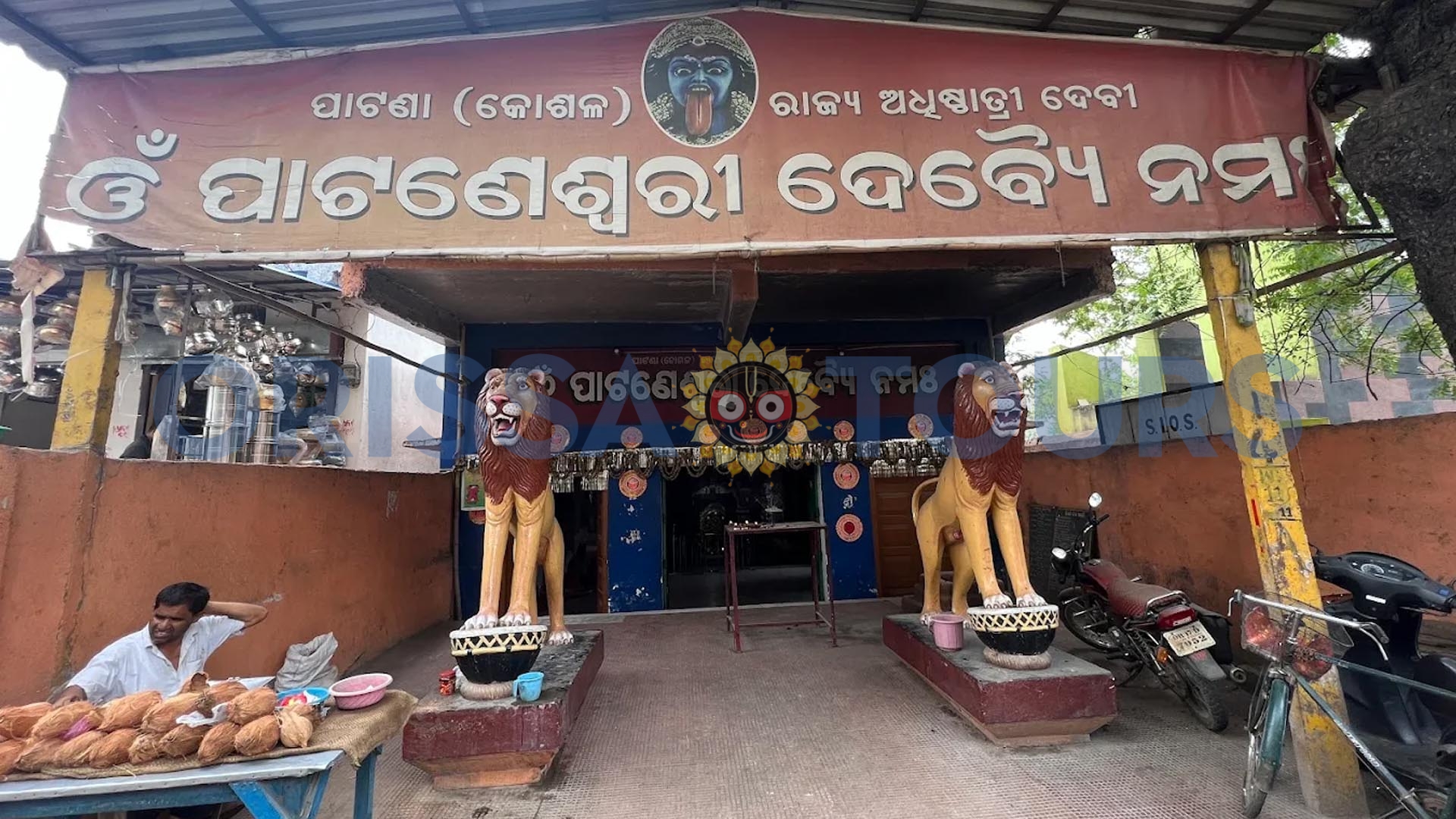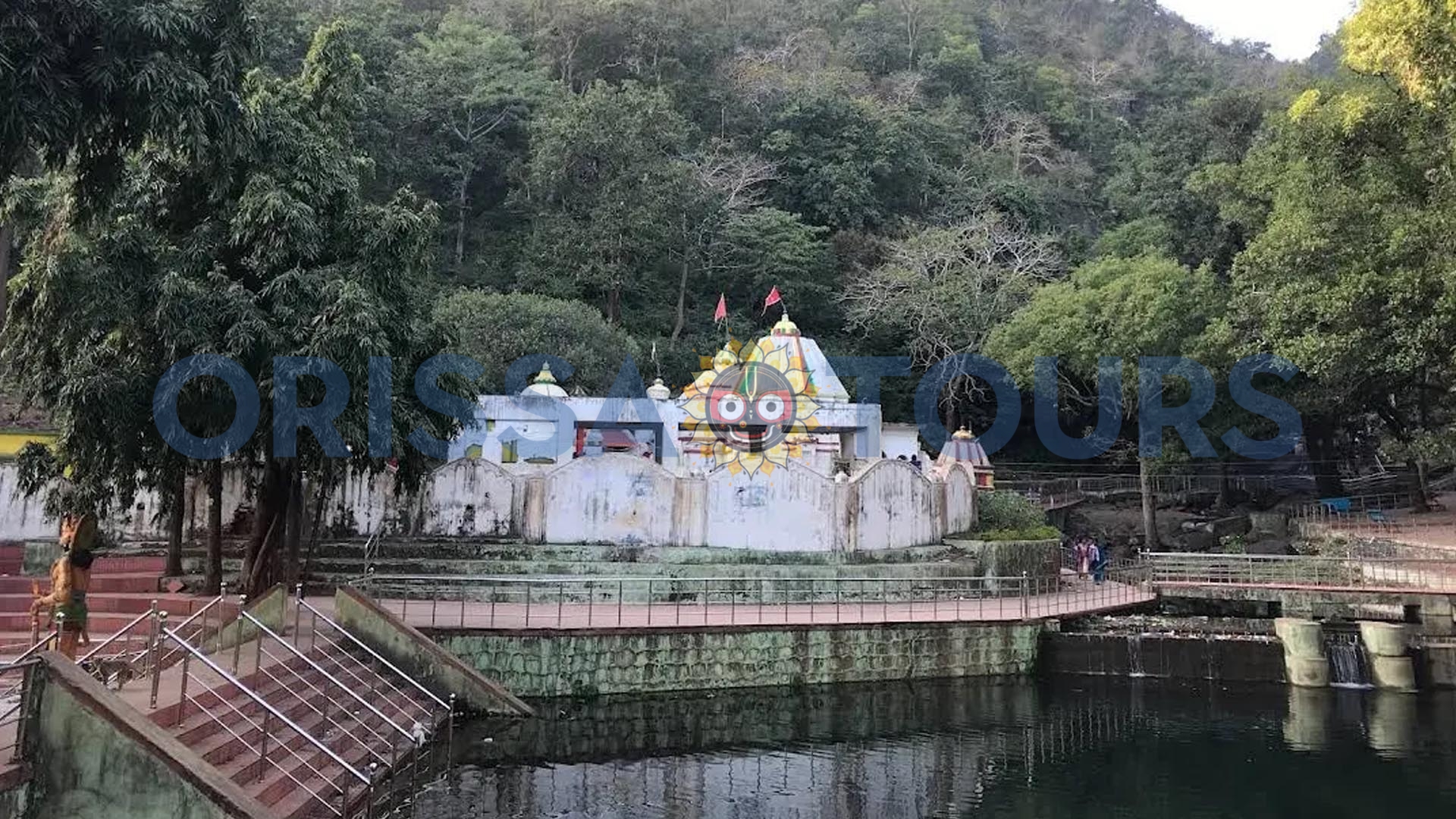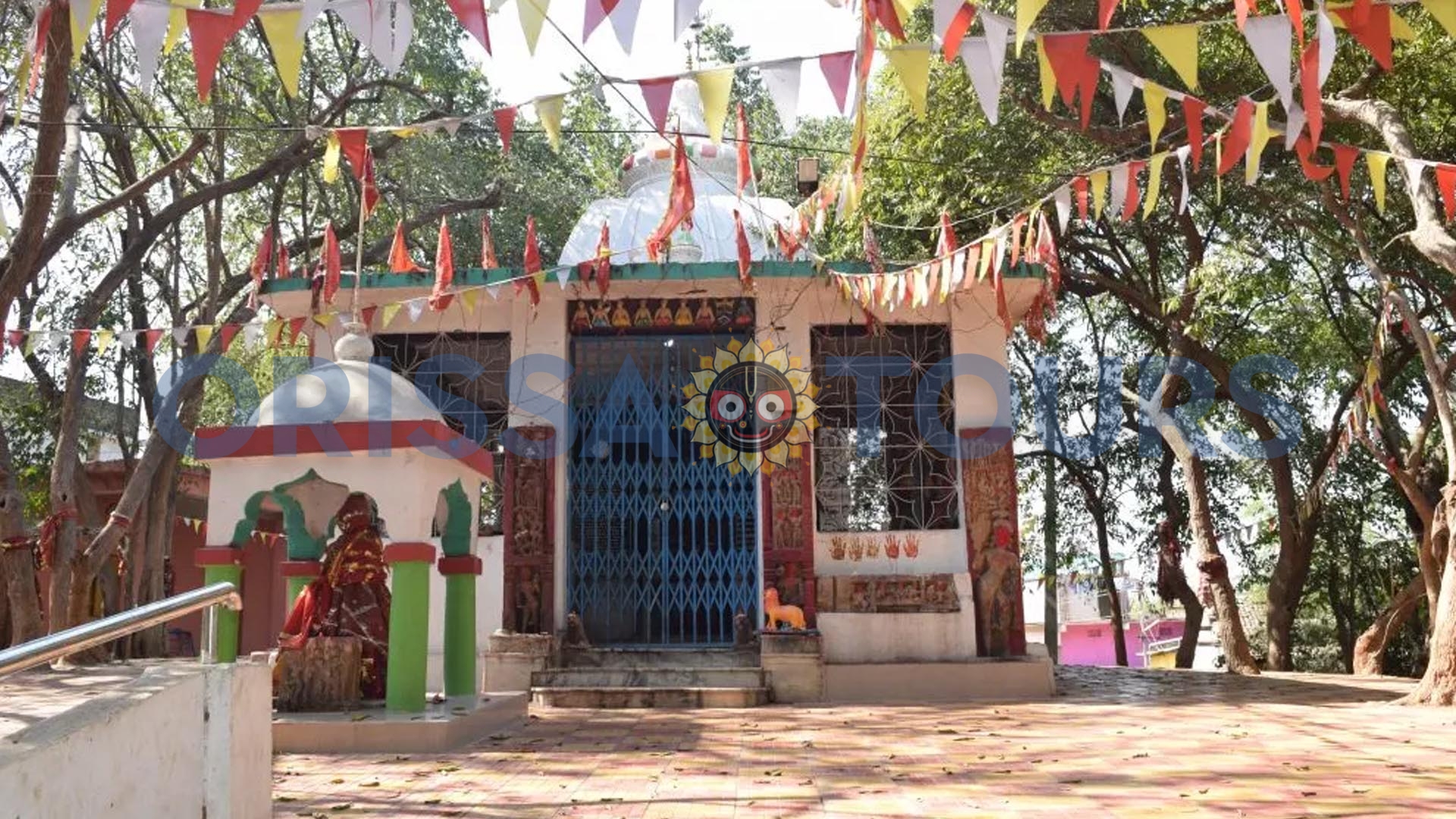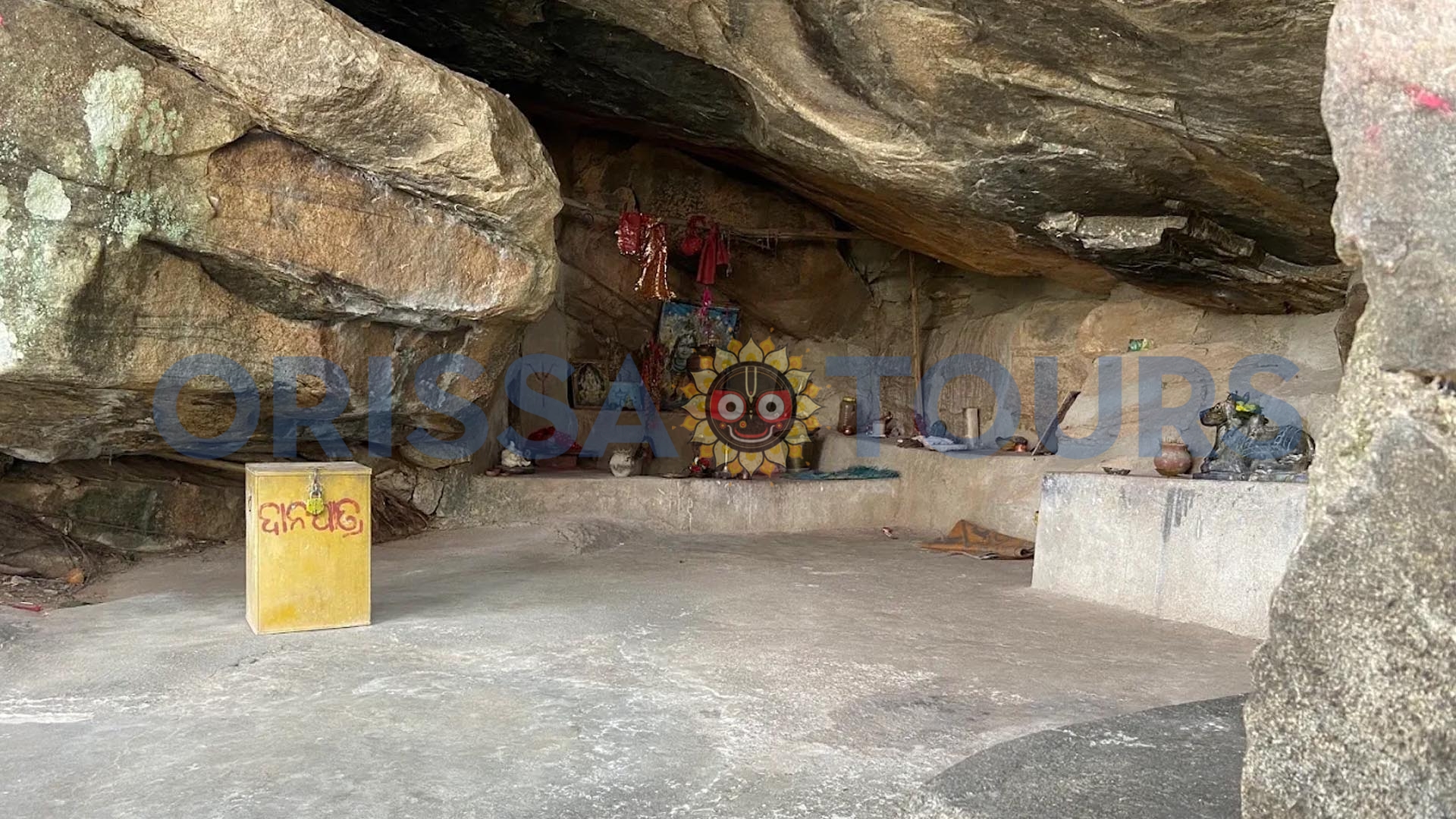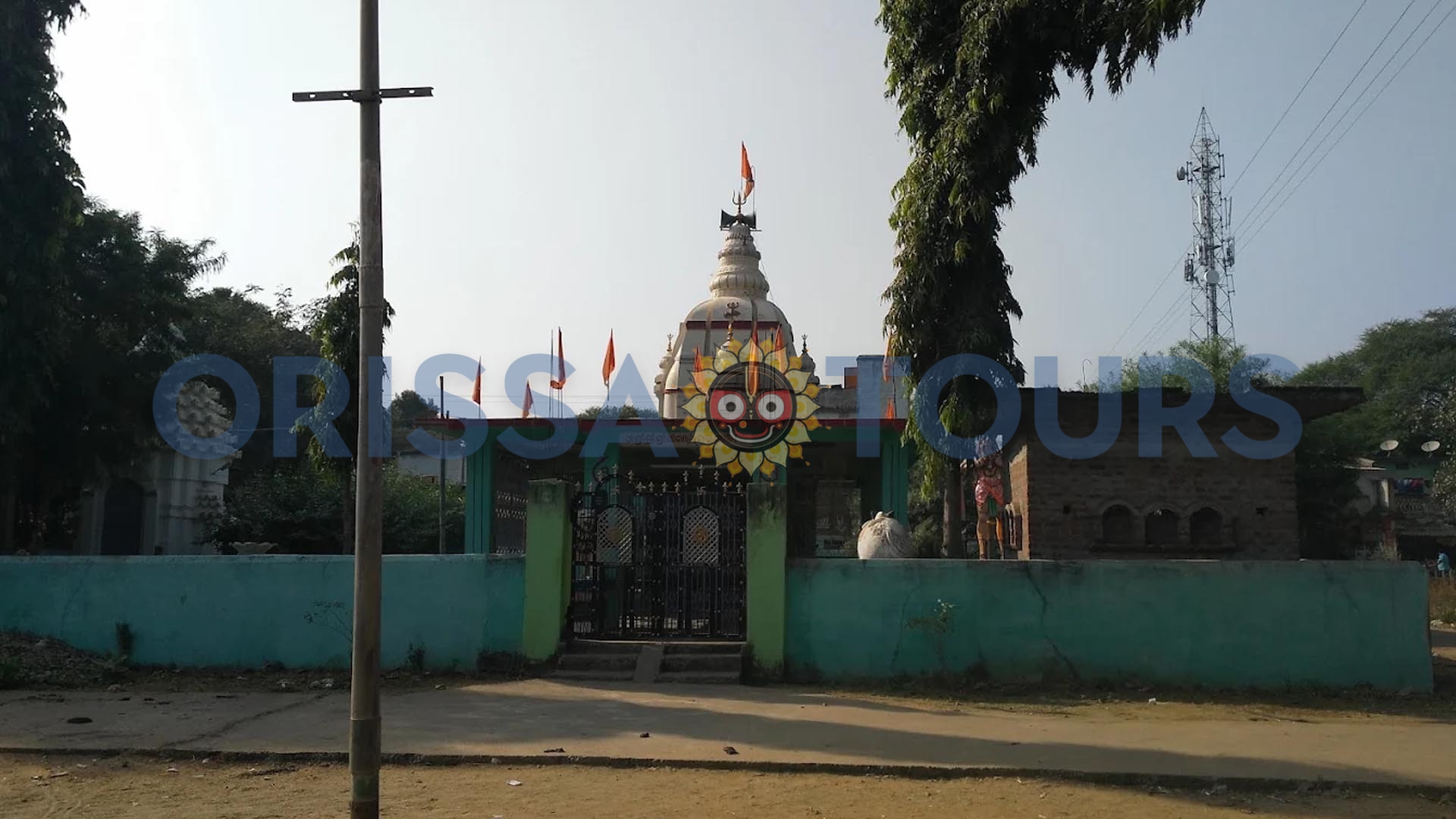Located in the middle of a dense jungle, Binikei Temple is becoming an extraordinary sacred site, where nature and worship become one. The Binikei Temple is located near Athamallik in the Angul district of Odisha. It’s a temple dedicated to Goddess Binikei and draws thousands of devotees and nature lovers all year round. What makes the temple so unique is that it is literally located beside the stunning Mahanadi River, and thus the surreal beauty of nature and immaculate spirituality emerge in harmony to create today’s beautiful meditation and peace.
The temple offers much more than a place of worship; it also embodies the culture of Odisha and reflects the spiritual connectivity of the people. The tranquil place surrounded by green jungle and hills allows for appreciation of urban life aside, billing itself as a time machine, allowing for glimpses of spirituality, in the busyness of life. The special fusion of beauty and worship makes Binikei Temple a recommended must-see for tourists who appreciate Odisha’s undiscovered beauty.

Historical Significance and Origins
The historical story of the Binikei Temple is vague, which we think adds to the mystique and spiritualities aspect of the Temple. Historians, educators, and storytellers have inferred from local lore and history that the structure standing today was constructed in the 19th Century; however, the practice of worship at the site derivates from a much earlier historic time.
Archaeological work, including excavated narratives, suggests that the sacred murti (idol) of Goddess Binikei was excavated during the 9th century A.D., which suggests that this Temple site has been a place of spiritual significance for centuries and continues to hold spiritual meanings for practices of worship.
Local lore includes divine intervention and miraculous events leading up to and during the founding of the Temple, as it will be told by family oral histories and traditions, with no real historical documentation to substantiate this work. This compounded lack of historical context only adds to the enigma surrounding the Temple, allowing people who visit to feel the spiritual energy of the site unhindered by historical context. The ambiguity related to the Temple and its antiquity permits a space and feeling of leaving an experience within themselves, and can be experienced and interpreted differently for the next.
The liminal uncertainty creates opportunities for spiritual engagement and possibly enlightenment for devotees celebrating interconnectedness with the spirituality of the sacred space; channelling meaning out of each encounter, hoping for blessings and hopefully progression on their journey to spiritual growth.
Architectural Features and Sacred Atmosphere
The architectural approach to Binikei Temple reflects traditional Odishan temples, while maintaining a quality of simple elegance that respects the surrounding natural area. The temple is built out of locally obtained materials, and the structure blends comfortably into the forest, allowing the spiritual feel of the temple to have an organic feel enhanced by the temple’s natural setting.
The overall design of the temple follows classical designs while also providing respect for the natural topography and environmental considerations of a riverside setting. The effective sacred atmosphere that is created inside the temple complex is elevated with the sounds of flowing river water and rustling leaves of the forest.

The smaller scale of the temple allows for a feeling of intimate worship and a more direct engagement with the divine. Stone carvings and local ornamental work show the craftsmanship from the local population, and the overall layout accommodates pilgrims moving during festivals and regular worship.
The temple’s dedicated integration of nature, trees, and rocks into the physical design of the temple is a great continuum of nature respect found in traditional Odishan temple architecture.
Goddess Binikei – The Presiding Deity
Goddess Binikei, the goddess of this sacred shrine, is known to be a powerful source of divine feminine energy and possesses fierce protective capabilities. The Binikei Temple has an outstanding murti of Binikei, the goddess, which inspires reverence as well as devotion from visitors across different demographics.
The idol itself is especially fierce-looking – a depiction of the goddess’s compelling qualities behind her role as a protector of her devotees and destroyer of evil. Devotees feel that Goddess Binikei has specific powers over their wishes, protecting families, or acting as a guide during struggles.
Devi Binikei is so important to local communities (“pueblos”) that she is considered to be their guardian deity. The prayers and rituals practiced drift smoothly through the generations following the various practices associated with the legendary stories (or “narratives”) of Binikei through to contemporary prayer and devotion, with the dedicated nature of worshippers serving to create an unbroken chain of devotion from then until now – modern devotion being surrounded by the spiritual essence of the historical-ancestors/spirits.
Because of the benevolence of the goddess Binikei, her temple continues to attract pilgrims who seek blessings for wealth, health, and spiritual dynamism, and it is a significant pilgrimage destination in the region.
Binikei Jatra – Annual Festival Celebrations
The yearly Binikei Jatra marks the apogee of spiritual/religious and cultural festivities at Binikei Temple as the serene temple complex is transformed into a brightly colored, spiritual/ devotional, and eventful temple complex. The festival, which occurs on the tenth day after Dolapurnima in the lunar month of Chaitra, spans three days and attracts thousands of devotees from Odisha and the bordering states. The festival serves as a showcase for the spiritual and cultural richness of the region, with spiritual/festivities and cultural performances by a local collective crowd.
During the Jatra, the temple complex, like Binikei’s grace and blessings, brings colors to the devotees, is turned over and filled with colors, and traditional music and exceedingly detailed and elaborate rituals in praise of the goddess Binikei. Local artists and performers displayed traditional dance forms, folk songs, and theatrical performances that depicted legends, spiritual stories, etc. The Jatra also features a fair with local handicrafts, traditional foods, and religious products.
The entire complex encapsulated a spirit of community through traditionally offered dialogue opportunities, community, socialization, and deliberation, making Binikei Jatra part of Odisha’s collective and spiritual-cultural identity.
Gateway to Satkosia Gorge
Binikei Temple is the perfect launching pad for Satkosia Gorge, one of Odisha’s most breathtaking landscapes, as well as a testament to the power of the Mahanadi River as it eroded its path through the Eastern Ghats and created one of Odisha’s most remarkable geographic features. Located just a stone’s throw from a 22 km long gorge that has been designated as a tiger sanctuary since 2007, you can enjoy a spiritual retreat and nature all in one trip. Many come to Odisha to explore the spiritual side of the state, but the option of including a natural experience, such as Satkosia Gorge, will provide a holistic experience of the soul and senses.
Satkosia Gorge offers stunning vistas, unique wildlife, and adventure experiences, including boat trips and wildlife spotting – the possibilities for eco tourism in and around Satkosia are vast. Due to the proximity to the temple, it makes it much easier for pilgrims to extend their stay and appreciate the natural experience of Satkosia Gorge. In geological time, the gorge is the generational process of millions of years, finally creating cliffs and pristine river ecosystems.
Tour operators in the surrounding area have developed combined packages that allow people to visit Binikei Temple and experience the natural phenomenon at Satkosia. The temple offers an impression of spirituality combined with dramatic natural splendor, providing travellers with a thoroughly entertaining travel experience.
Panchadhara Hills – Natural Crown
The Panchadhara Hills rise like a natural crown behind Binikei Temple, enhancing the sacred qualities of the temple and the scenery around it. The hills surround the temple complex and provide a beautiful frame for the area. The hills also contribute to the natural diversity and increased spiritual quality of the area. The Panchadhra Hills take their name from local words, emphasizing their cultural place in the local stories and tradition of belief.
The Panchadhara Hills present visitors with excellent opportunities for nature photography, trekking, and meditation, for those seeking further engagement with nature. The varied elevation of the hills creates conditions for many microclimates, which support plant and animal life, making the area an important local biodiversity area. When the sun rises and sets, the hills create incredible silhouettes that add to the temple’s mystical qualities.
Numerous local guides often tell stories and folklore about the edges of these hills, enhancing understanding of the cultural value of the area. The hills create natural barriers to the outside world, helping to sustain the quiet ambiance of the temple location.
Best Time to Visit and Travel Tips
The best period to see Binikei Temple is in winter from October to March, when the temperature is mild and conducive to a pleasant pilgrimage and spirituality. During these months, the temperature is milder, the humidity is lower, and the possibility of downpours is low; this leads to a more enjoyable pilgrimage walk. The lush natural beauty of the temple is at its best under the clear skies and cool breeze of the winter months. This also provides better opportunities for outdoor activities and pictures.
If visitors want to participate in the complete experience of the local culture, they should plan to visit Binikei at the same time as the annual Binikei Jatra festival, but it can be busy with limited accommodation during six peak days of the festival.
Visitors planning to see Binikei Temple should carry a pair of comfortable walking shoes, light cotton clothes, some sun protection, and some essential first aid supplies.
Reasonably, visitors should aim to arrive early morning at Binikei Temple during weekdays to help minimize other crowds and flow of pilgrims; early mornings are often more peaceful and serene than other times of the day. It is very important to be observant and respectful of customs, and eco-friendly in this area of temples and pilgrimage, as the surrounding areas are sensitive ecosystems. Given that festivals and peak days will always have limited accommodation or scheduled transportation, plan accordingly. Seek to advance the book with travellers.
Nearby Attractions and Activities
The Binikei Temple area offers many attractions and experiences that add a cultural or natural element to your spiritual experience. The famous Tikarpada Crocodile Project, located a of hours away, gives you an opportunity to see these incredible reptiles in their natural environment while also supporting conservation efforts. Crocodile Projects epitomize the excellent work of wildlife preservationists in Odisha and provide educational details about crocodile behavior and habitat conservation.
Times out of the Binikei Temple area include Darseng Dam, where you can enjoy great scenic views and picnicking opportunities, smaller temples with various local styles of architecture and religious traditions, and outdoor adventure opportunities such as river rafting, nature hiking, and bird viewing opportunities, all in the Satkosia area.
Locally, Athamallik markets have an array of traditional handicrafts, handloom products of the region, and regional food that provide an authentic feeling for your experience. The spiritual, natural, and cultural destinations provide tourism that satisfies various needs, interests, and preferences, supports local communities, and supports conservation efforts.
Location and Accessibility
Binikei Temple is well situated, approximately 25 km from the town of Athmallik in the Angul district. Notwithstanding its location in a serene forest setting, it has good access. It is located on the banks of the Mahanadi River and boasts impressive views of the river and the surrounding environment. Travelers can reach the temple by vehicle, along good road conditions, winding through the countryside and forests.
The trip to the temple itself is quite an adventure as travelers pass through beautiful villages and forest patches that capture the natural diversity of Odisha. The temple is around 100 km from Angul town and is easily accessible for day trips or longer weekend excursions. You can use public transportation from Athmallik, using buses or shared vehicles. Private vehicles also offer the additional flexibility to explore the local area at leisure. These routes generally have good road conditions, but visitors should check weather conditions during the monsoon season for safety.
Tourist Facilities, Transportation, Tourist Attractions, How to Reach, Accessibility
Best Time to Visit
The best time to visit Binikei mandir is from October to June, and the Winter Season
Temple Opening Time
Maa Biniki Temple open timings are Monday to Sunday 7:00 am in the morning to 6:00 pm in the Evening
Closest Bus Stand and Distance
The Closest Bus stand is Athmallik, which is located around 23 Km distance from Binikei Mandir
Closest Railway Station & Distance
The Closest Railway Station is Angul, which is located around 100 Km distance from Binikei Mandir
Closest Airport and Distance
The Closest airport is Biju Patnaik International Airport, which is located around 218 Km distance from Binikei Mandir



